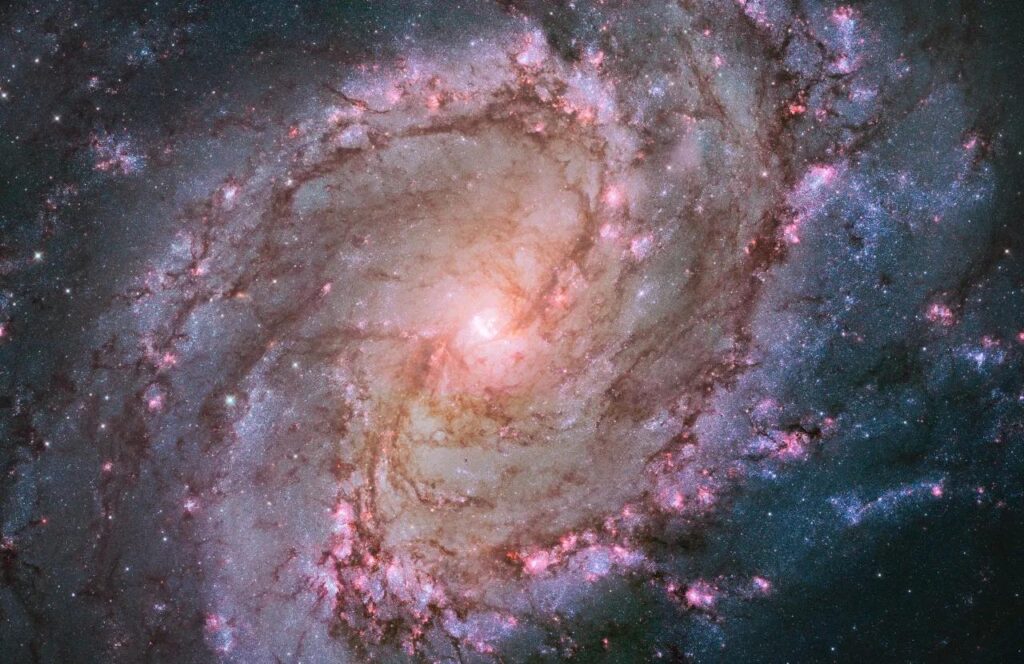Messier 83 (M83), also known as the Southern Pinwheel Galaxy, is a barred spiral galaxy located in the constellation Hydra. It was discovered by French astronomer Nicolas-Louis de Lacaille in 1752. Charles Messier later included it in his famous catalog of deep-sky objects in 1781. M83 is one of the closest and brightest barred spiral galaxies in the sky, making it a favorite target for both amateur and professional astronomers.
Basic Information
Located approximately 15 million light-years from Earth, M83 is part of the Centaurus Group, which includes several other prominent galaxies. It spans about 55,000 light-years in diameter, roughly half the size of our Milky Way. The galaxy features well-defined spiral arms that are rich with star-forming regions, giving it a striking appearance when viewed through telescopes.
Structure and Composition
The spiral structure of M83 has prominent arms that show extensive regions of ionized hydrogen gas, indicating active star formation. These regions are often called H II regions and are sites where new stars are born. The galaxy also contains large amounts of dust and gas.
The high rate of star formation in the galaxy, results in numerous bright young star clusters and supernova remnants to appear throughout its spiral arms. To date, six supernovae have been observed in M83 since 1923, more than in any other Messier object. These explosive events provide valuable insights into the life cycles of stars and the chemical enrichment of galaxies.
The core of M83 houses a bright, active nucleus that likely contains a supermassive black hole. Observations using various wavelengths, including infrared and X-rays, have revealed complex structures and dynamic processes occurring in the galaxy’s center, including starburst activity. The galaxy’s core is also noted for its peculiar double-bar structure, which may play a role in channeling gas toward the central regions, fueling star formation and nuclear activity.
Scientific Research and Findings
M83 has been extensively studied using various space telescopes, including the Hubble Space Telescope, the Chandra X-ray Observatory, and the Spitzer Space Telescope. These observations have provided detailed images and data across the electromagnetic spectrum, helping scientists to better understand the processes occurring within the galaxy.
M83 serves as an important laboratory for studying the processes of galaxy formation and evolution. Its proximity and rich detail allow astronomers to observe and analyze its structure and stellar populations with great precision, contributing to our understanding of the universe.
Observation
Messier 83 (M83) is best observed from the Southern Hemisphere as it is located in the constellation of Hydra, which is positioned fairly low in the southern sky for northern observers to see. The most convenient months for viewing the galaxy are April, May, and June when Hydra is visible in the evening sky.
To observe the galaxy, you will need at least a pair of binoculars or a small telescope. Under dark skies and with good seeing conditions, the galaxy’s structure and some details within its spiral arms can be discerned through more powerful telescopes.




